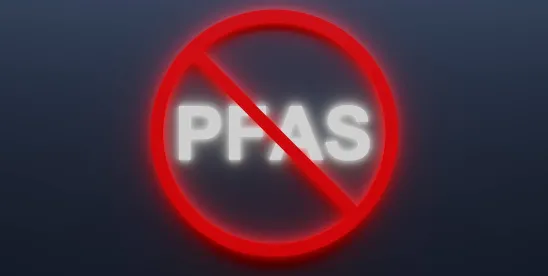On November 14, 2024, the U.S. Environmental Protection Agency (EPA) announced the release of its third annual progress report, “highlighting the significant achievements the agency has made under its PFAS Strategic Roadmap and the Biden-Harris Administration’s whole-of-government strategy to protect communities from the impacts of forever chemicals.” According to EPA’s press release, progress on per- and polyfluoroalkyl substances (PFAS) during the Biden-Harris Administration includes:
- Protecting drinking water: In 2024, EPA announced the first-ever, nationwide, legally enforceable drinking water standards for PFAS. EPA states that since early 2021, it has been undertaking the largest nationwide effort to understand the frequency that PFAS is found in drinking water and at what levels. Under this program, EPA is collecting, and making publicly available, data on 29 different PFAS in drinking water at approximately 10,000 water systems nationwide. More information on the final rule is available in our May 9, 2024, memorandum.
- Investing in projects to address PFAS contamination in water: Through President Biden’s Bipartisan Infrastructure Law, EPA is investing $10 billion for removal of PFAS and other emerging contaminants from water. According to EPA, most of this funding is helping communities to install new infrastructure and treatment technologies to address PFAS in drinking water. EPA also announced its Fiscal Year 2024 funding allocations for EPA’s Tribal infrastructure financing programs for PFAS and other emerging contaminants, including more than $35 million for drinking water and $4.5 million for clean water.
- Cleaning up PFAS contamination on lands: In 2024, EPA designated perfluorooctanoic acid (PFOA) and perfluorooctanesulfonic acid (PFOS) as hazardous substances under the Comprehensive Environmental Response, Compensation, and Liability Act (CERCLA), also known as Superfund, to compel those most responsible for PFAS contamination to pay for cleanup, rather than taxpayers. More information on the designation is available in our April 23, 2024, memorandum.
- Advancing chemical safety: EPA used its authority under the Toxic Substances Control Act (TSCA) to issue a significant new use rule (SNUR) to prevent inactive PFAS from reentering commerce. This stops companies from starting or resuming the manufacture or processing of 329 PFAS that have not been made or used for many years without a complete EPA review and risk determination. More information on the SNUR is available in our January 12, 2024, memorandum. EPA states that for PFAS that were previously reviewed, it “has issued rules to ensure any protective restrictions are more broadly applicable to all manufacturers and processors of those chemicals.”
- Safeguarding our waterways: EPA states that it “finalized the development of two critical methods for measuring PFAS in air, water, soil, and other environmental media.” EPA issued final water quality criteria for PFOA and PFOS, as well as benchmarks for other PFAS to protect aquatic life. EPA also released a recommended list of PFAS to monitor for state and Tribal fish and shellfish advisory programs.
- Pursuing enforcement and compliance: EPA established a clear PFAS Enforcement Discretion and Settlement Policy Under CERCLA to reinforce the Agency’s focus on significant contributors to the PFAS contamination challenge rather than on entities like farms or water utilities. More information regarding the policy is available in our April 23, 2024, memorandum. EPA also instituted a new National Enforcement and Compliance Initiative, Addressing Exposure to PFAS, to focus its resources and attention on enforcement actions that protect public health.
- Advancing our understanding of PFAS: EPA states that it catalyzed numerous research and regulatory programs to collect and generate data on PFAS that will improve scientific understanding of this large and diverse class of chemicals. EPA also developed, implemented, and refined its National PFAS Testing Strategy to build information on categories of PFAS to inform future decisions.
- Reducing PFAS in products and purchasing: EPA notes that it has taken significant action to reduce PFAS uses in commerce through efforts to remove PFAS as a class of chemicals rather than only a few chemicals at a time. Additionally, EPA has ensured that PFAS are not intentionally added to Safer Choice-certified products and has removed PFAS from the list of inert ingredients approved for use in non-food pesticide products. More information on the updates to the Safer Choice and Design for the Environment (DfE) Standard is available in our August 22, 2024, memorandum. More information on the removal of PFAS from the approved inert ingredients list is available in our December 27, 2022, blog item. EPA also joined the General Services Administration (GSA) in taking action to cut PFAS from U.S. government custodial contracts. More information is available in our April 12, 2024, blog item.




 />i
/>i

